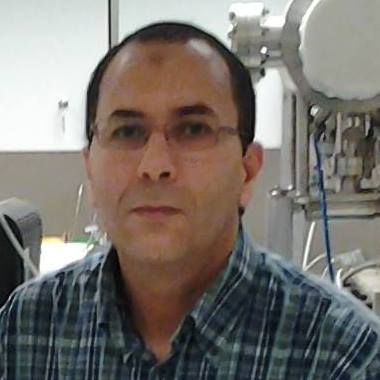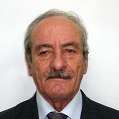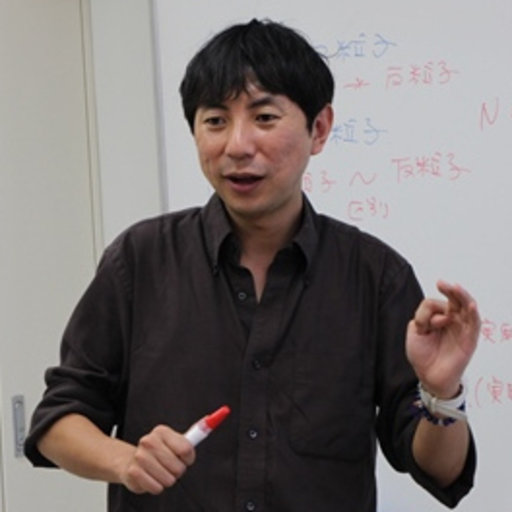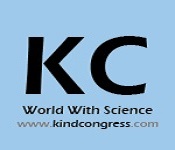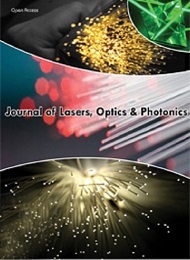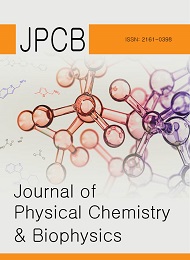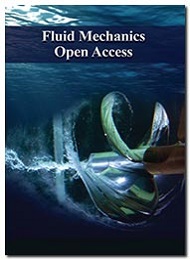Theme: Exploring research and innovations in Physics for future advancements
Physics 2022
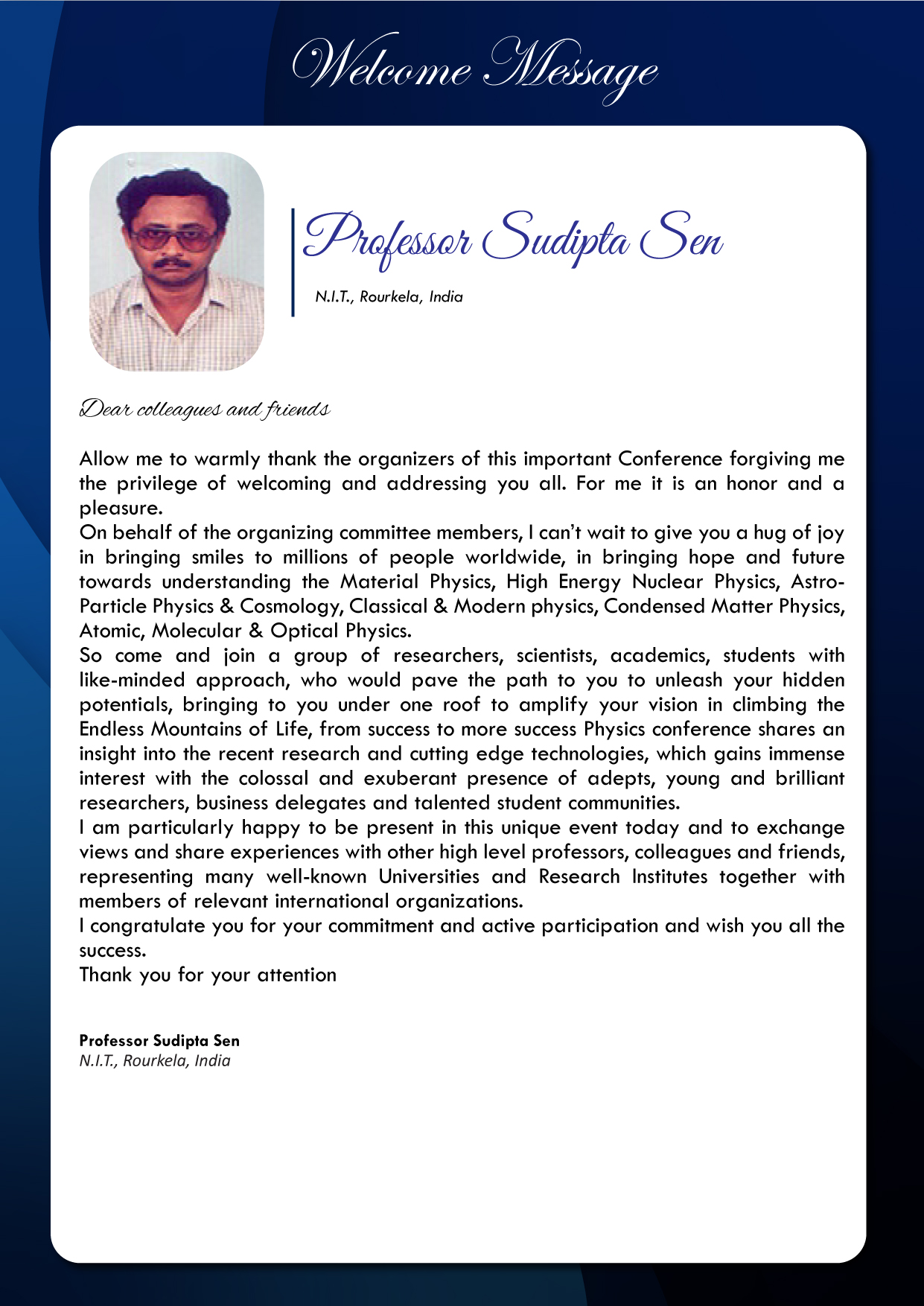
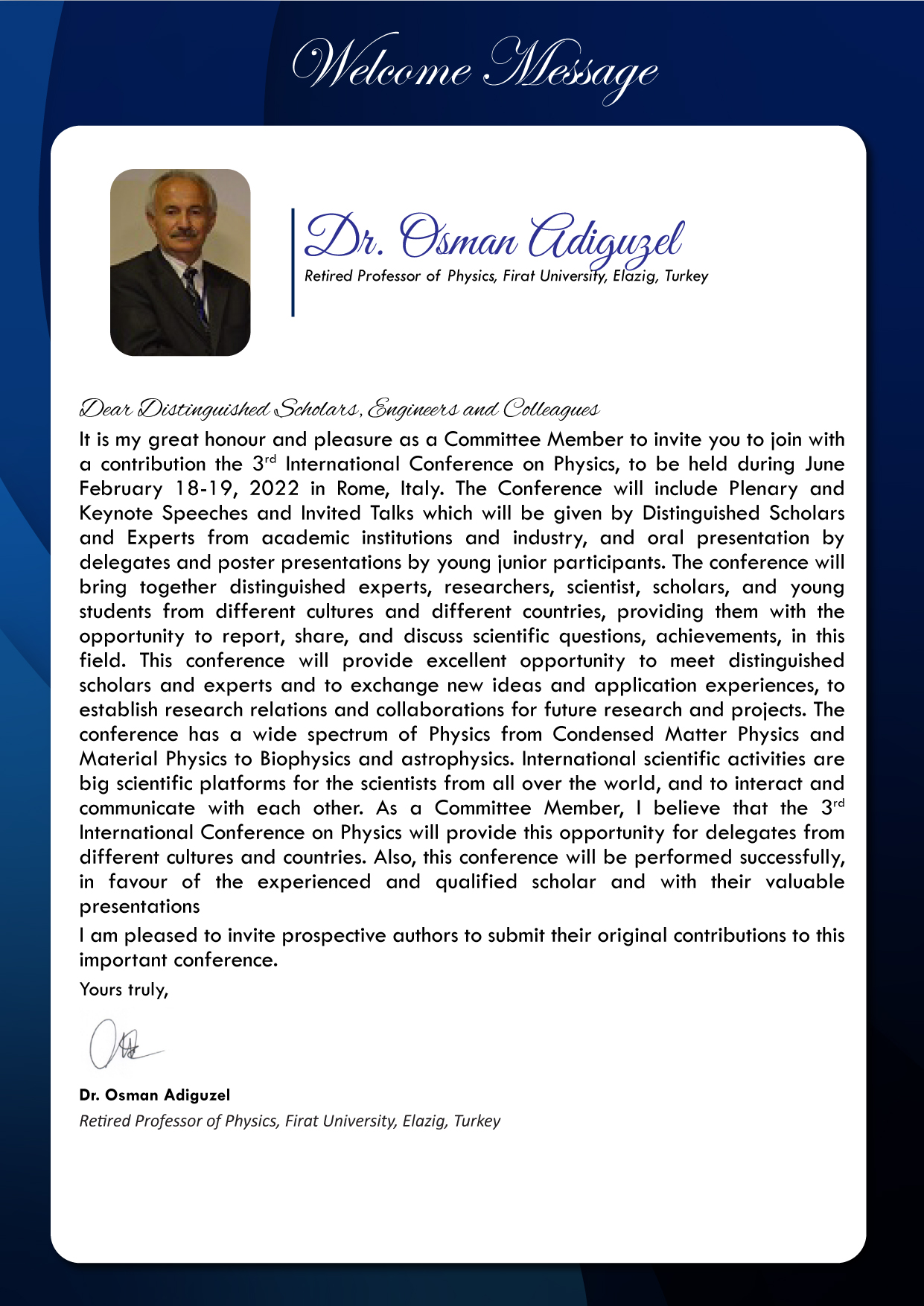
The renowned "3rd International Conference on Physics," which is scheduled for February 18-19, 2022 in Rome, Italy, cordially invites participants from all over the world to present and share information.
Theme: “Exploring research and innovations in Physics for future advancements”
This event is a hybrid research forum for Physics, featuring powerful Keynote presentations, Oral talks, Poster presentations, and Exhibitions from renowned practitioners in the field of Physics and its disciplines, all centred on the theme of "Exploring research and innovations in Physics for future advancements." You will discover new physics concepts that will be extremely useful.
IMPORTANCE
Physics 2022 offers a diverse choice of sessions and tracks, allowing participants and all attendees to broaden their knowledge of the subject and interact with experts in the field. With intriguing Sessions, Symposia, Workshops, and Plenary presentations, Keynote Presentations, Young Researchers Forum, and Poster Sessions, the Conference schedule showcases new and advanced science and contemporary subjects.
Young Scientist Benefits
- Our conferences provide the ideal platform for your study by allowing you to present your findings orally.
- Share your thoughts with prominent scholars as well as mentors.
- The winners of the Young Scientist Award will get a reorganisation certificate and a memento.
- This Forum will provide relevant and timely information to young scientists.
- Platform for young researchers to collaborate for better development
- The award should encourage competitors to strive for their utmost potential, which could benefit the field as a whole.
Track 1: Classical & Modern physics
Classical physics is concerned with matter and energy on a regular scale of observation, whereas current physics is concerned with matter and energy behaviour under severe conditions or on a very large or very small scale. Time and space are absolute and independent in classical physics, therefore they can be considered separately.Time and space, on the other hand, are relative and dependent in current physics. We can distinguish acoustics, optics, or mechanics in the most fundamental area, and cosmology, quantum mechanics, or relativity in the most current applications, between the branches of classical and modern physics.
- Classical mechanics. Newton's laws of motion
- Classical electrodynamics
- Classical thermodynamics
- Special relativity and general relativity
- Classical chaos theory and nonlinear dynamics
Related Conferences:
Physics Conferences | Physics Conferences 2020 | Optical Fibre Conferences | Theoretical Physics Conferences | Applied Physics 2020
Related Societies & Associations:
Europe:
Austrian Physical Society | European Physical Society | Fellows of the Australian Institute of Physics | Optical Society | Photonics Society of Poland | Physical Society of London | Swiss Physical Society | Estonian Physical Society | Italian Physical Society | International Association of Mathematical Physics | International Society on General Relativity and Gravitation | Italian Society for General Relativity and Gravitation | Society of Physicists of Macedonia | Society of Physics Students
USA:
American Physical Society | Optical Society | American Crystallographic Association | American Physical Society | Brazilian Physical Society | Canadian Association of Physicists | Mathematical Association of America
Asia Pacific:
Institute of Physics | Japan Society of Applied Physics | Nepal Physical Society | Physics Society of Iran | Australian Institute of Physics | Chinese Physical Society Community of Physics | Indian Physical Society
Track 2: Condensed Matter Physics
Material that has been compressed Physics is an area of material science concerned with the physical properties of matter's condensate phase, in which particles adhere to one another. The laws of quantum mechanics and electromagnetism are two examples. It has a strong connection to atomic physics and biology. The creation of the semiconductor transistor, laser technology, and various phenomena explored in the context of nanotechnology are all examples of condensed matter physics research.
- Anderson impurity model
- Colloid vibration current
- Degenerate semiconductor
- Dynamic electrophoretic mobility
- Electric-field screening
Related Conferences:
Physics Conferences | Physics Conferences 2020 | Optical Fibre Conferences | Theoretical Physics Conferences | Applied Physics 2020
Related Societies & Associations:
Europe:
Austrian Physical Society | European Physical Society | Fellows of the Australian Institute of Physics | Optical Society | Photonics Society of Poland | Physical Society of London | Swiss Physical Society | Estonian Physical Society | Italian Physical Society | International Association of Mathematical Physics | International Society on General Relativity and Gravitation | Italian Society for General Relativity and Gravitation | Society of Physicists of Macedonia | Society of Physics Students
USA:
American Physical Society | Optical Society | American Crystallographic Association | American Physical Society | Brazilian Physical Society | Canadian Association of Physicists | Mathematical Association of America
Asia Pacific:
Institute of Physics | Japan Society of Applied Physics | Nepal Physical Society | Physics Society of Iran | Australian Institute of Physics | Chinese Physical Society Community of Physics | Indian Physical Society
Track 3: Astro- Particle Physics & Cosmology
Astro-particle physics is a branch of particle physics that examines fundamental particles with astronomical origins. It is located at the crossroads of particle physics and astronomy. Cosmology, on the other hand, is the study of the Universe's birth and evolution. Particle physics, astronomy, astrophysics, relativity, solid state physics, and cosmology have all collaborated to form this relatively new subject. The invention of neutrino oscillation played a part in this. High-energy cosmic-ray physics, particle cosmology, VHE and UHE gamma-ray astronomy, and high- and low-energy neutrino astronomy are all areas of research in the discipline of astro-particle physics. Cosmology is primarily concerned with stellar dynamics and evolution, galaxy formation and evolution, magnetohydrodynamics, large-scale structure of matter in the cosmos, cosmic ray origins, general relativity, and physical cosmology, including string cosmology and Astro particle physics.
- Dark Matter
- Charged Cosmic Radiation
- Gamma-Ray Astronomy
- High-Energy Neutrino Astrophysics
- Low-Energy Neutrino Astrophysics
Related Conferences:
Physics Conferences | Physics Conferences 2020 | Optical Fibre Conferences | Theoretical Physics Conferences | Applied Physics 2020
Related Societies & Associations:
Europe:
Austrian Physical Society | European Physical Society | Fellows of the Australian Institute of Physics | Optical Society | Photonics Society of Poland | Physical Society of London | Swiss Physical Society | Estonian Physical Society | Italian Physical Society | International Association of Mathematical Physics | International Society on General Relativity and Gravitation | Italian Society for General Relativity and Gravitation | Society of Physicists of Macedonia | Society of Physics Students
USA:
American Physical Society | Optical Society | American Crystallographic Association | American Physical Society | Brazilian Physical Society | Canadian Association of Physicists | Mathematical Association of America
Asia Pacific:
Institute of Physics | Japan Society of Applied Physics | Nepal Physical Society | Physics Society of Iran | Australian Institute of Physics | Chinese Physical Society Community of Physics | Indian Physical Society
Track 4: Material Physics
The field of physics that deals with the physical properties of materials is known as material physics. It is a subclass of condensed matter physics that applies fundamental condensed matter concepts to complicated multiphase fluids, including technologically important materials. It lays the groundwork for the creation of novel materials with previously unattainable functions for future critical technologies like nanotechnology and biomaterials. Materials physics has applications in a variety of sectors, including materials engineering and medicine, as well as climate protection through resource efficiency.
- Classical mechanics.
- Thermodynamics and statistical mechanics.
- Electromagnetism and photonics.
- Relativistic mechanics.
- Quantum mechanics, atomic physics, and molecular physics.
Related Conferences:
Physics Conferences | Physics Conferences 2020 | Optical Fibre Conferences | Theoretical Physics Conferences | Applied Physics 2020
Related Societies & Associations:
Europe:
Austrian Physical Society | European Physical Society | Fellows of the Australian Institute of Physics | Optical Society | Photonics Society of Poland | Physical Society of London | Swiss Physical Society | Estonian Physical Society | Italian Physical Society | International Association of Mathematical Physics | International Society on General Relativity and Gravitation | Italian Society for General Relativity and Gravitation | Society of Physicists of Macedonia | Society of Physics Students
USA:
American Physical Society | Optical Society | American Crystallographic Association | American Physical Society | Brazilian Physical Society | Canadian Association of Physicists | Mathematical Association of America
Asia Pacific:
Institute of Physics | Japan Society of Applied Physics | Nepal Physical Society | Physics Society of Iran | Australian Institute of Physics | Chinese Physical Society Community of Physics | Indian Physical Society
Track 5: High Energy Nuclear Physics
Understanding the properties and behaviour of elementary particles through the study of collisions or decays involving energy of hundreds of megaelectronvolts is a branch of physics. The exploration of nuclear matter under severe conditions, as well as the Quark-Gluon Plasma, which existed for roughly a microsecond after the Big Bang, is part of high-energy nuclear research. It now includes exotic mesons, multi-GeV reaction investigations, and the quark-gluon plasma, which were formerly considered particle physics issues.
- Nuclear decay
- Nuclear fusion
- Nuclear fission
- Production of "heavy" elements
- Nuclear matter
Related Conferences:
Physics Conferences | Physics Conferences 2020 | Optical Fibre Conferences | Theoretical Physics Conferences | Applied Physics 2020
Related Societies & Associations:
Europe:
Austrian Physical Society | European Physical Society | Fellows of the Australian Institute of Physics | Optical Society | Photonics Society of Poland | Physical Society of London | Swiss Physical Society | Estonian Physical Society | Italian Physical Society | International Association of Mathematical Physics | International Society on General Relativity and Gravitation | Italian Society for General Relativity and Gravitation | Society of Physicists of Macedonia | Society of Physics Students
USA:
American Physical Society | Optical Society | American Crystallographic Association | American Physical Society | Brazilian Physical Society | Canadian Association of Physicists | Mathematical Association of America
Asia Pacific:
Institute of Physics | Japan Society of Applied Physics | Nepal Physical Society | Physics Society of Iran | Australian Institute of Physics | Chinese Physical Society Community of Physics | Indian Physical Society
Track 6: Atomic, Molecular & Optical Physics
Atomic physics examines atoms as a separate system of electrons and an atomic nucleus, whereas molecular physics examines the physical features of molecules. Optical physics makes use of and develops light sources that range from microwaves to X-rays across the electromagnetic spectrum. The generation and detection of light, linear and nonlinear optical processes, spectroscopy, lasers, and laser spectroscopy are all covered by optical physics. The three branches are inextricably linked. These areas naturally include the theory and applications of emission, absorption, and scattering of electromagnetic radiation from atoms and molecules, spectroscopic analysis, laser and maser creation, and optical characteristics of matter.
- Atomic nucleus
- Electromagnetic radiation
- Optical engineering
- Quantum optics
- Optical coherence tomography
Related Conferences:
Physics Conferences | Physics Conferences 2020 | Optical Fibre Conferences | Theoretical Physics Conferences | Applied Physics 2020
Related Societies & Associations:
Europe:
Austrian Physical Society | European Physical Society | Fellows of the Australian Institute of Physics | Optical Society | Photonics Society of Poland | Physical Society of London | Swiss Physical Society | Estonian Physical Society | Italian Physical Society | International Association of Mathematical Physics | International Society on General Relativity and Gravitation | Italian Society for General Relativity and Gravitation | Society of Physicists of Macedonia | Society of Physics Students
USA:
American Physical Society | Optical Society | American Crystallographic Association | American Physical Society | Brazilian Physical Society | Canadian Association of Physicists | Mathematical Association of America
Asia Pacific:
Institute of Physics | Japan Society of Applied Physics | Nepal Physical Society | Physics Society of Iran | Australian Institute of Physics | Chinese Physical Society Community of Physics | Indian Physical Society
Track 7: Quantum Science & Technology
Quantum physics is the study of the tiniest particles, which are thought to be the universe's fundamental particles. Understanding the properties of solids, atoms, nuclei, subatomic particles, and light requires quantum physics. Quantum computing, quantum cryptography, and quantum teleportation are some of its subfields. The science of delivering secret communications across a quantum channel is known as quantum cryptography. Quantum key distribution is a method that leverages quantum mechanics features to provide a safe key. Quantum computers use quantum bits, or qubits, to increase computing power. Atomic clocks, the most precise clocks on the planet, employ quantum physics to measure time. Squeezing, a method of minimising noise in laser beams, can also be done using quantum techniques.
- Quantum cryptography
- Quantum simulation
- Quantum metrology
- Quantum engineering
- Quantum sensing
Related Conferences:
Physics Conferences | Physics Conferences 2020 | Optical Fibre Conferences | Theoretical Physics Conferences | Applied Physics 2020
Related Societies & Associations:
Europe:
Austrian Physical Society | European Physical Society | Fellows of the Australian Institute of Physics | Optical Society | Photonics Society of Poland | Physical Society of London | Swiss Physical Society | Estonian Physical Society | Italian Physical Society | International Association of Mathematical Physics | International Society on General Relativity and Gravitation | Italian Society for General Relativity and Gravitation | Society of Physicists of Macedonia | Society of Physics Students
USA:
American Physical Society | Optical Society | American Crystallographic Association | American Physical Society | Brazilian Physical Society | Canadian Association of Physicists | Mathematical Association of America
Asia Pacific:
Institute of Physics | Japan Society of Applied Physics | Nepal Physical Society | Physics Society of Iran | Australian Institute of Physics | Chinese Physical Society Community of Physics | Indian Physical Society
Track 8: Nano-Technology
Nanotechnology is the study of materials and machinery on a billionth-of-a-meter scale. It is one of the most dynamic areas of research and development since it is so important in fundamental physics, applied physics and engineering, and molecular materials. Many technology and business sectors, including information technology, homeland security, medicine, transportation, energy, and others, are being revolutionised by nanotechnology.
- Carbon black, carbon nanotubes, graphene, fullerene nanofibers fullerene
- Silica fumes
- Clay
- Metal/alloys
- Ceramics
Related Conferences:
Physics Conferences | Physics Conferences 2020 | Optical Fibre Conferences | Theoretical Physics Conferences | Applied Physics 2020
Related Societies & Associations:
Europe:
Austrian Physical Society | European Physical Society | Fellows of the Australian Institute of Physics | Optical Society | Photonics Society of Poland | Physical Society of London | Swiss Physical Society | Estonian Physical Society | Italian Physical Society | International Association of Mathematical Physics | International Society on General Relativity and Gravitation | Italian Society for General Relativity and Gravitation | Society of Physicists of Macedonia | Society of Physics Students
USA:
American Physical Society | Optical Society | American Crystallographic Association | American Physical Society | Brazilian Physical Society | Canadian Association of Physicists | Mathematical Association of America
Asia Pacific:
Institute of Physics | Japan Society of Applied Physics | Nepal Physical Society | Physics Society of Iran | Australian Institute of Physics | Chinese Physical Society Community of Physics | Indian Physical Society
Track 9: Plasma Science
Plasma science is the study of charged particles and fluids that interact with self-consistent electric and magnetic fields. Plasma is a collection of charged particles, both positive and negative, that behave in a collective manner. Space and astrophysics, controlled fusion, accelerator physics, and beam storage are all areas of applicability for this scientific subject. Plasma science is also being used in conjunction with nanotechnology to develop catalytic fuel cell electrodes that require only a quarter of the platinum required by traditional electrodes. Such advancements are anticipated to have a resonant effect on future "green" automobiles.
- Dipoles and Monopoles
- Strength of magnetic field
- Permeability, paramagnetism, ferromagnetism and diamagnetis
- Cause of magnetism
- Retentivity
- Inductance
Related Conferences:
Physics Conferences | Physics Conferences 2020 | Optical Fibre Conferences | Theoretical Physics Conferences | Applied Physics 2020
Related Societies & Associations:
Europe:
Austrian Physical Society | European Physical Society | Fellows of the Australian Institute of Physics | Optical Society | Photonics Society of Poland | Physical Society of London | Swiss Physical Society | Estonian Physical Society | Italian Physical Society | International Association of Mathematical Physics | International Society on General Relativity and Gravitation | Italian Society for General Relativity and Gravitation | Society of Physicists of Macedonia | Society of Physics Students
USA:
American Physical Society | Optical Society | American Crystallographic Association | American Physical Society | Brazilian Physical Society | Canadian Association of Physicists | Mathematical Association of America
Asia Pacific:
Institute of Physics | Japan Society of Applied Physics | Nepal Physical Society | Physics Society of Iran | Australian Institute of Physics | Chinese Physical Society Community of Physics | Indian Physical Society
Track 10: Electromagnetism and Electronics
Electromagnetism is one of the four fundamental forces and is a discipline of physics concerned with the study of the electromagnetic force. It is concerned with the physical interactions of electricity and magnetism. Electronics, on the other hand, is the study of how to control electron flow. Analogue electronics, Digital electronics, Microelectronics, and Embedded systems are some of the branches of electronics.
- Dipoles and Monopoles
- Strength of magnetic field
- Permeability, paramagnetism, ferromagnetism and diamagnetism
- Cause of magnetism
- Retentivity
- Inductance
Related Conferences:
Physics Conferences | Physics Conferences 2020 | Optical Fibre Conferences | Theoretical Physics Conferences | Applied Physics 2020
Related Societies & Associations:
Europe:
Austrian Physical Society | European Physical Society | Fellows of the Australian Institute of Physics | Optical Society | Photonics Society of Poland | Physical Society of London | Swiss Physical Society | Estonian Physical Society | Italian Physical Society | International Association of Mathematical Physics | International Society on General Relativity and Gravitation | Italian Society for General Relativity and Gravitation | Society of Physicists of Macedonia | Society of Physics Students
USA:
American Physical Society | Optical Society | American Crystallographic Association | American Physical Society | Brazilian Physical Society | Canadian Association of Physicists | Mathematical Association of America
Asia Pacific:
Institute of Physics | Japan Society of Applied Physics | Nepal Physical Society | Physics Society of Iran | Australian Institute of Physics | Chinese Physical Society Community of Physics | Indian Physical Society
Track 11: Applied Physics
Electromagnetism is one of the four fundamental forces and is a discipline of physics concerned with the study of the electromagnetic force. It is concerned with the physical interactions of electricity and magnetism. Electronics, on the other hand, is the study of how to control electron flow. Analogue electronics, Digital electronics, Microelectronics, and Embedded systems are some of the branches of electronics. Condensed matter, lasers and quantum electronics, high-speed optoelectronics, free-electron laser physics, vacuum tunnelling, nondestructive testing, biophysics, synchrotron and accelerator physics, semiconductor physics and devices, and astrophysics and space physics are all areas of applied physics.
- Accelerator physics
- Acoustics
- Atmospheric physics
- Biophysics
- Brain–computer interfacing
Related Conferences:
Physics Conferences | Physics Conferences 2020 | Optical Fibre Conferences | Theoretical Physics Conferences | Applied Physics 2020
Related Societies & Associations:
Europe:
Austrian Physical Society | European Physical Society | Fellows of the Australian Institute of Physics | Optical Society | Photonics Society of Poland | Physical Society of London | Swiss Physical Society | Estonian Physical Society | Italian Physical Society | International Association of Mathematical Physics | International Society on General Relativity and Gravitation | Italian Society for General Relativity and Gravitation | Society of Physicists of Macedonia | Society of Physics Students
USA:
American Physical Society | Optical Society | American Crystallographic Association | American Physical Society | Brazilian Physical Society | Canadian Association of Physicists | Mathematical Association of America
Asia Pacific:
Institute of Physics | Japan Society of Applied Physics | Nepal Physical Society | Physics Society of Iran | Australian Institute of Physics | Chinese Physical Society Community of Physics | Indian Physical Society
Track 12: Heavy-ion-Physics
Atomic material science and particle physics is the branch of physics that studies nuclear cores, their components, and their interactions. The atomic power era is the most well-known type of atomic material science. The examination has sped up tenders in a variety of fields, including atomic medicine and attractive resonation imaging, atomic weapons, particle implantation in materials construction, and radiocarbon dating in geography and archaic exploration.
- High-density matter
- Ultrarelativistic nuclear collisions
- Quark Gluon Plasma
- Rapidity and Pseudo-Rapidity
- Quark-gluon plasma density
Related Conferences:
Physics Conferences | Physics Conferences 2020 | Optical Fibre Conferences | Theoretical Physics Conferences | Applied Physics 2020
Related Societies & Associations:
Europe:
Austrian Physical Society | European Physical Society | Fellows of the Australian Institute of Physics | Optical Society | Photonics Society of Poland | Physical Society of London | Swiss Physical Society | Estonian Physical Society | Italian Physical Society | International Association of Mathematical Physics | International Society on General Relativity and Gravitation | Italian Society for General Relativity and Gravitation | Society of Physicists of Macedonia | Society of Physics Students
USA:
American Physical Society | Optical Society | American Crystallographic Association | American Physical Society | Brazilian Physical Society | Canadian Association of Physicists | Mathematical Association of America
Asia Pacific:
Institute of Physics | Japan Society of Applied Physics | Nepal Physical Society | Physics Society of Iran | Australian Institute of Physics | Chinese Physical Society Community of Physics | Indian Physical Society
Track 13: Bio Physics
Molecular biophysics investigates biological topics that are comparable to those investigated in biochemistry and molecular biology, with the goal of discovering the physical foundations of biomolecular processes. Scientists in this discipline study the connections between a cell's numerous processes, such as the interconnections between DNA, RNA, and protein production, as well as how these interactions are regulated.
- Structural Biophysics and Protein Dynamics
- Systems Neuroscience
- Molecular Microscopy and Optical Probes
- Cell Signaling and Cellular Physiology
- Computational Biology and Genomics
Related Conferences:
Physics Conferences | Physics Conferences 2020 | Optical Fibre Conferences | Theoretical Physics Conferences | Applied Physics 2020
Related Societies & Associations:
Europe:
Austrian Physical Society | European Physical Society | Fellows of the Australian Institute of Physics | Optical Society | Photonics Society of Poland | Physical Society of London | Swiss Physical Society | Estonian Physical Society | Italian Physical Society | International Association of Mathematical Physics | International Society on General Relativity and Gravitation | Italian Society for General Relativity and Gravitation | Society of Physicists of Macedonia | Society of Physics Students
USA:
American Physical Society | Optical Society | American Crystallographic Association | American Physical Society | Brazilian Physical Society | Canadian Association of Physicists | Mathematical Association of America
Asia Pacific:
Institute of Physics | Japan Society of Applied Physics | Nepal Physical Society | Physics Society of Iran | Australian Institute of Physics | Chinese Physical Society Community of Physics | Indian Physical Society
Track 14: Neutron Scattering
Modern materials science aims to comprehend the factors that influence the qualities of matter at the atomic level, then apply that understanding to improve those properties or create new materials and functionalities. This process is frequently accompanied by the discovery of exciting new physics, which can lead to previously unimagined possibilities. Almost all of our society's significant changes, from the rapid expansion of computing and the internet to the constant increase in average life span, can be traced back to advances in our understanding and use of material physics and chemistry. Scientists utilise a number of methods and approaches to examine atomic-scale structure and dynamics, which are frequently based on the scattering of particle beams. To examine structure with atomic resolution, a "ideal" probe might have a wavelength similar to the space between atoms and an energy similar to that of atoms in materials to study their dynamics. It would be devoid of charge in order to avoid severe scattering by charges on electrons or nuclei and to allow deep penetration into materials.It would be scattered equally by light and heavy atoms and have a proper magnetic moment, allowing us to investigate magnetism with ease. To ease comparison with theory and computer modelling, the scattering cross-section would be exactly quantifiable on an absolute scale.
- Elastic neutron scattering
- Quasielastic/inelastic neutron scattering
- Spin-echo instrument
- Diffractometers
- Monochromator
Related Conferences:
Physics Conferences | Physics Conferences 2020 | Optical Fibre Conferences | Theoretical Physics Conferences | Applied Physics 2020
Related Societies & Associations:
Europe:
Austrian Physical Society | European Physical Society | Fellows of the Australian Institute of Physics | Optical Society | Photonics Society of Poland | Physical Society of London | Swiss Physical Society | Estonian Physical Society | Italian Physical Society | International Association of Mathematical Physics | International Society on General Relativity and Gravitation | Italian Society for General Relativity and Gravitation | Society of Physicists of Macedonia | Society of Physics Students
USA:
American Physical Society | Optical Society | American Crystallographic Association | American Physical Society | Brazilian Physical Society | Canadian Association of Physicists | Mathematical Association of America
Asia Pacific:
Institute of Physics | Japan Society of Applied Physics | Nepal Physical Society | Physics Society of Iran | Australian Institute of Physics | Chinese Physical Society Community of Physics | Indian Physical Society
Track 15: Particle Accelerators
A particle accelerator is a mechanism that accelerates elementary particles to extremely high energies, such as electrons or protons. Particle accelerators, at its most basic level, produce charged particle beams that can be employed for a variety of scientific applications. Particle accelerators are divided into two categories: linear accelerators and circular accelerators. Particles are propelled along a linear, or straight, beam line using linear accelerators. Particles are propelled along a circular track using circular accelerators. Fixed-target studies require linear accelerators, whereas colliding beam and fixed-target experiments require circular accelerators.
- Electrodynamic particle accelerators
- Magnetic induction accelerators
- Linear accelerators
- Circular or cyclic RF accelerators
- Betatrons
Related Conferences:
Physics Conferences | Physics Conferences 2020 | Optical Fibre Conferences | Theoretical Physics Conferences | Applied Physics 2020
Related Societies & Associations:
Europe:
Austrian Physical Society | European Physical Society | Fellows of the Australian Institute of Physics | Optical Society | Photonics Society of Poland | Physical Society of London | Swiss Physical Society | Estonian Physical Society | Italian Physical Society | International Association of Mathematical Physics | International Society on General Relativity and Gravitation | Italian Society for General Relativity and Gravitation | Society of Physicists of Macedonia | Society of Physics Students
USA:
American Physical Society | Optical Society | American Crystallographic Association | American Physical Society | Brazilian Physical Society | Canadian Association of Physicists | Mathematical Association of America
Asia Pacific:
Institute of Physics | Japan Society of Applied Physics | Nepal Physical Society | Physics Society of Iran | Australian Institute of Physics | Chinese Physical Society Community of Physics | Indian Physical Society
Track 16: Radiation Protection
Radiation protection refers to the principles, requirements, technology, and procedures for safeguarding individuals (radiation workers, the general public, and patients receiving radiation diagnosis and therapy) against the damaging effects of ionising radiation. It dates back to the early twentieth century. Very quickly after the discoveries of radiation and radioactivity, the benefits of radiation were recognised in the use of X-rays for medical diagnosis. The haste to capitalise on the medical benefits quickly led to the recognition of the other side of the coin: radiation-induced damage. Only the most evident forms of radiation injury, such as radiation burns, were recognised in those early days, and protection efforts concentrated on their prevention, mostly for practitioners than than patients. This was the beginning of radiation protection as a discipline, despite the fact that the problem was narrow. It was increasingly recognised throughout the middle decades of this century that there were other, less evident, adverse radiation consequences, such as radiation-induced cancer, for which there is a danger even at modest doses of radiation. This danger cannot be entirely avoided. It can only be reduced to the bare minimum. As a result, a major component of radiation protection is the overt balancing of benefits from nuclear and radiation operations against radiation danger, as well as measures to reduce residual risk.
- Traditional Lead Shielding
- Lead Composite Shielding
- Lead-Free Shielding
- Radiation therapy
- Diagnostic imaging
Related Conferences:
Physics Conferences | Physics Conferences 2020 | Optical Fibre Conferences | Theoretical Physics Conferences | Applied Physics 2020
Related Societies & Associations:
Europe:
Austrian Physical Society | European Physical Society | Fellows of the Australian Institute of Physics | Optical Society | Photonics Society of Poland | Physical Society of London | Swiss Physical Society | Estonian Physical Society | Italian Physical Society | International Association of Mathematical Physics | International Society on General Relativity and Gravitation | Italian Society for General Relativity and Gravitation | Society of Physicists of Macedonia | Society of Physics Students
USA:
American Physical Society | Optical Society | American Crystallographic Association | American Physical Society | Brazilian Physical Society | Canadian Association of Physicists | Mathematical Association of America
Asia Pacific:
Institute of Physics | Japan Society of Applied Physics | Nepal Physical Society | Physics Society of Iran | Australian Institute of Physics | Chinese Physical Society Community of Physics | Indian Physical Society
Track 17: Quantum Physics
Quantum theory is the theoretical foundation of modern physics, explaining the nature and behaviour of matter and energy on an atomic and subatomic scale. Quantum physics is the study of the nature and behaviour of matter and energy at that level. Quantum physics is the study of small objects that are affected by quantum reality. Quantum is a term that refers to a distinct amount or part. One of the most surprising and contentious elements of quantum physics is that the outcome of a single experiment on a quantum system cannot be predicted with certainty.
- Quantum Realm
- Quantum field theory
- Quantum information science
- Quantum mechanics
- Quantum interference
Related Conferences:
Physics Conferences | Physics Conferences 2020 | Optical Fibre Conferences | Theoretical Physics Conferences | Applied Physics 2020
Related Societies & Associations:
Europe:
Austrian Physical Society | European Physical Society | Fellows of the Australian Institute of Physics | Optical Society | Photonics Society of Poland | Physical Society of London | Swiss Physical Society | Estonian Physical Society | Italian Physical Society | International Association of Mathematical Physics | International Society on General Relativity and Gravitation | Italian Society for General Relativity and Gravitation | Society of Physicists of Macedonia | Society of Physics Students
USA:
American Physical Society | Optical Society | American Crystallographic Association | American Physical Society | Brazilian Physical Society | Canadian Association of Physicists | Mathematical Association of America
Asia Pacific:
Institute of Physics | Japan Society of Applied Physics | Nepal Physical Society | Physics Society of Iran | Australian Institute of Physics | Chinese Physical Society Community of Physics | Indian Physical Society
Track 18: Medical Physics
The Medical Physics section of Current Oncology's mission is to give information and assessments on these significant advances in image-guided adaptive radiation therapy. Critical evaluation studies of the clinical application and effect of novel and clinically established technologies are also published in Current Oncology. The application of physics principles, theories, and methodologies to medicine or healthcare is known as medical physics.
- Medical imaging physics.
- Radiation therapeutic physics.
- Nuclear medicine physics.
- Health physics.
- Non-ionizing Medical Radiation Physics.
- Physiological measurement.
Related Conferences:
Physics Conferences | Physics Conferences 2020 | Optical Fibre Conferences | Theoretical Physics Conferences | Applied Physics 2020
Related Societies & Associations:
Europe:
Austrian Physical Society | European Physical Society | Fellows of the Australian Institute of Physics | Optical Society | Photonics Society of Poland | Physical Society of London | Swiss Physical Society | Estonian Physical Society | Italian Physical Society | International Association of Mathematical Physics | International Society on General Relativity and Gravitation | Italian Society for General Relativity and Gravitation | Society of Physicists of Macedonia | Society of Physics Students
USA:
American Physical Society | Optical Society | American Crystallographic Association | American Physical Society | Brazilian Physical Society | Canadian Association of Physicists | Mathematical Association of America
Asia Pacific:
Institute of Physics | Japan Society of Applied Physics | Nepal Physical Society | Physics Society of Iran | Australian Institute of Physics | Chinese Physical Society Community of Physics | Indian Physical Society
Track 19: Astrophysics
Astrophysics is a branch of traditional astronomy that studies celestial bodies and events. Astrophysics is a term that encompasses both astronomy and physics. Electronics, advanced computing, communication satellites, optics, solar panels, and MRI scanners are some of the domains where astronomy research can be seen in action. Even if it takes time for an application of astrophysics research to find its way into our daily lives, the influence it has is well worth the wait.
- Radio astronomy.
- Optical astronomy.
- Infrared astronomy.
- Ultraviolet, X-ray, and gamma ray astronomy using space telescopes.
- Cosmology
Related Conferences:
Physics Conferences | Physics Conferences 2020 | Optical Fibre Conferences | Theoretical Physics Conferences | Applied Physics 2020
Related Societies & Associations:
Europe:
Austrian Physical Society | European Physical Society | Fellows of the Australian Institute of Physics | Optical Society | Photonics Society of Poland | Physical Society of London | Swiss Physical Society | Estonian Physical Society | Italian Physical Society | International Association of Mathematical Physics | International Society on General Relativity and Gravitation | Italian Society for General Relativity and Gravitation | Society of Physicists of Macedonia | Society of Physics Students
USA:
American Physical Society | Optical Society | American Crystallographic Association | American Physical Society | Brazilian Physical Society | Canadian Association of Physicists | Mathematical Association of America
Asia Pacific:
Institute of Physics | Japan Society of Applied Physics | Nepal Physical Society | Physics Society of Iran | Australian Institute of Physics | Chinese Physical Society Community of Physics | Indian Physical Society
Track 20: Theory of Relativity
Matter does not simply draw on other matter over empty space, as Newton predicted. Matter, on the other hand, jumbles space-time, and other matter is affected by this jumbled space-time. Objects (including planets like the Earth) travel through space-time under their own inertia, following curved paths because the shortest path (or geodesic) in twisted space-time is along curved paths.
- Einstein Theory of Relativity.
- Relativism
- Special relativity
- General relativity
- Cosmological
Related Conferences:
Physics Conferences | Physics Conferences 2020 | Optical Fibre Conferences | Theoretical Physics Conferences | Applied Physics 2020
Related Societies & Associations:
Europe:
Austrian Physical Society | European Physical Society | Fellows of the Australian Institute of Physics | Optical Society | Photonics Society of Poland | Physical Society of London | Swiss Physical Society | Estonian Physical Society | Italian Physical Society | International Association of Mathematical Physics | International Society on General Relativity and Gravitation | Italian Society for General Relativity and Gravitation | Society of Physicists of Macedonia | Society of Physics Students
USA:
American Physical Society | Optical Society | American Crystallographic Association | American Physical Society | Brazilian Physical Society | Canadian Association of Physicists | Mathematical Association of America
Asia Pacific:
Institute of Physics | Japan Society of Applied Physics | Nepal Physical Society | Physics Society of Iran | Australian Institute of Physics | Chinese Physical Society Community of Physics | Indian Physical Society
The global market for quantum computing would increase at a CAGR of 24.6 percent from 2018 to 2024, according to the "Quantum Computing Market & Technologies – 2018-2024" report. The performance of Quantum Computing technology has improved at a remarkable rate in 2017, and we expect a wave of discoveries in 2018-2019.
We're in the midst of a "Quantum Computing Supremacy Race," which will produce ground-breaking computing capability that outperforms digital supercomputers. Quantum computing has the ability to alter long-standing dynamics in trade, intelligence, military affairs, and geopolitical power balances. If you've been following the news on quantum computing and the evolution of industrial and national efforts to build a scalable, fault-tolerant quantum computer that can solve problems that are beyond the scope of current supercomputing capabilities, you're aware that something big is brewing in the quantum world. Quantum physicists are now collaborating with corporate tech titans to build quantum computing capabilities and technologies as the cornerstone of a second information era, in ways that were unheard of just five years ago. Advances in quantum computer architecture, fault-tolerant algorithms, and new fabrication methods are gradually translating this "holy grail" technology into a viable programme that could one day outperform classical processing in some applications. With these new discoveries, the big question for businesses isn't whether a quantum computer will exist, but who will create it and benefit from it.
According to a new market research report titled "By Type Application of physics such as (Optical communication & laser processing), Vertical (Commercial, Telecom, Research, Defense, Medical, Automotive, Electronics, & Industrial), and Geography - Global Forecast to 2022," the market is expected to reach USD 15.38 billion by 2022, growing at a CAGR of 5.2 percent between 2017 and 2022. Increasing demand from the healthcare, environmental, and financial sectors, as well as a trend toward the creation of nano and micro devices, and improved performance over traditional material processing techniques, are all driving the rise of physics.
Because of the growing needs of companies as well as the large demand, atomic physics systems have been on the rise. The market for atomic physics is expected to reach USD 5.60 billion by 2020, growing at a CAGR of 6.0 percent from 2015 to 2020. In the next years, North America is likely to have the biggest share; however, the Asia-Pacific region, with a focus on India, China, and Japan, is predicted to have the highest growth rate in the atomic physics market. Agilent Technologies (US), PerkinElmer (US), Thermo Fisher Scientific (US), and Bruker Corporation are some of the major companies in the worldwide atomic physics market (U.S.).
On the basis of process, end users, and geography, nuclear physics is utilised to define, describe, and forecast the market. From USD 2.25 billion in 2016, the Nuclear Physics market is estimated to reach USD 2.85 billion by 2021, growing at a CAGR of 4.8 percent from 2016 to 2021. We can look at the market for nuclear physics in four different regions: North America, Europe, Asia-Pacific, and the Rest of the World. It gives detailed details about the competitive landscape for industry leaders and stakeholders' opportunities.
Applied Physics is meant to be used in technical and practical situations. Applied Physics is based on the fundamental truths and concepts of the physical sciences, and it applies scientific principles to practical technologies and related fields such as Lasers, Optics, Semiconductor Devices, and Nanophotonics. Because of its uses, there is always a demand for Physics in the market.
According to previous industry research, the global market for Physics is predicted to reach over £3.4 billion by 2018. According to further estimates by market analysts BCC research, the global market for Physics-based sectors was valued much more in 2017, roughly £4.3 billion more, and is predicted to expand to around £6.2 billion by 2018, representing annual growth of 7.7%. Extending applications in the Cardiac, Breast MRI, and Neurologic domains is predicted to boost the global market, which is expected to grow from £770 million in 2015 to about £1.2 billion by 2019, representing a 9.3% annual growth rate.
Why to attend?
The 6th International Conference on Physics will be the largest conference dedicated to physics, and it will serve as a top technical venue for reporting and learning about the latest research and development, as well as the introduction of new applications and technology. Hot subject presentations from around the world are featured, as well as professional networking with industry leaders, leading working groups, and panels.
This event is organised by Conference Series and includes current significant physics conference themes such as medical physics conference, applied physics conference, occupational physics conference, high energy physics conference, plasma physics conference, applied physics conference, condensed matter physics conference, quantum physics conference, and so on.
Major Physics Associations around the Globe
- International Union of Pure and Applied Physics
- International Astronomical Union
- The international society for optics and photonics
- International Union of Crystallography
- Society of Non-Linear and Dynamics Econometrics
- The International Association of Mathematical Physics (IAMP)
- The international society for optics and photonics (IUPAB)
Target Audience:
Physics 2022 is expecting the participants from all over the world in its multidisciplinary fields. This mixture of audience will give boost and opportunity to justify our theme " Exploring research and innovations in Physics for future advancements".
Physics 2021 expecting attendees from,
- Professors, Students, Researchers and Technical Staff from Physics and Astronomy and other related disciplines
- Scientists and students from Engineering and Technology (E&T)
- Delegates from Physical Science and Nanotechnology Associations
- Delegates from Physics, Semiconductor, Electronics, Power and Energy related industries
- Directors of Companies
- Managers and Business Intelligence Experts
- Research students and Research Institutes
- Advertising and Promotion Agency Executives
- Nanotechnology Engineers
World-renowned speakers, the most recent techniques, tactics and the newest updates along with the future innovations in the field of Physics. Come be a part of it...!
Conference Highlights
- Classical & Modern physics
- Condensed Matter Physics
- Astro- Particle Physics & Cosmology
- Material Physics
- High Energy Nuclear Physics
- Atomic, Molecular & Optical Physics
- Quantum Science & Technology
- Nano-Technology
- Plasma Science
- Electromagnetism and Electronics
- Applied Physics
- Heavy-ion-Physics
- Bio Physics
- Neutron Scattering
- Particle Accelerators
- Radiation Protection
- Quantum Physics
- Medical Physics
- Astrophysics
- Theory of Relativity
To share your views and research, please click here to register for the Conference.
To Collaborate Scientific Professionals around the World
| Conference Date | February 18-19, 2022 | ||
| Sponsors & Exhibitors |
|
||
| Speaker Opportunity Closed | |||
| Poster Opportunity Closed | Click Here to View | ||
Useful Links
Special Issues
All accepted abstracts will be published in respective Our International Journals.
Abstracts will be provided with Digital Object Identifier by



